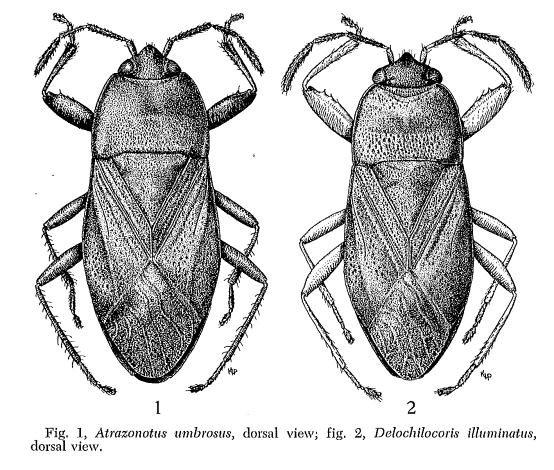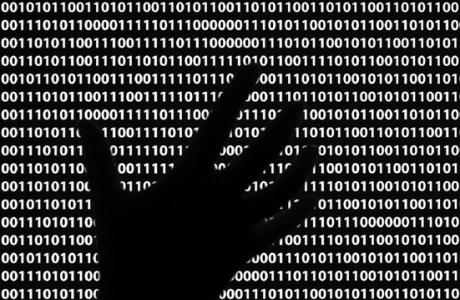Evan Rothera, a PhD Candidate from the History Department at The Pennsylvania State University is one of our 2012 Strochlitz Travel Grant awardees. He visited us in early August to research the Latin American Newspaper Collection. Below is his essay that document his experience using the collection, preliminary findings and future directions for his research.
I applied for a Rose and Sigmund Strochlitz Travel Grant from the Archives & Special Collections at the Thomas J. Dodd Research Center so that I could conduct research on Domingo F. Sarmiento and Argentine uses of Abraham Lincoln’s image. My primary research question concerned the reception in Argentina and Latin America of Sarmiento’s biography of Abraham Lincoln, Vida de Lincoln. While serving as Argentine Minister to the United States, Sarmiento published Vida in 1866, which made it one of the earliest post-assassination Lincoln biographies and the first published in Spanish. My previous research indicated that the biography received a great deal of positive press in the United States, but was generally ignored in Latin America. This was ironic, because Sarmiento intended the biography to serve as a model and guide for Argentines and Argentina, as well as a vindication of his actions as Governor of the Province of San Juan. In order conduct further research on Sarmiento and Vida, I came to the Dodd Center to use their extensive collection of Latin American newspapers. This collection includes important Argentine newspapers such as The Weekly Standard and La Prensa, which are invaluable to the study of the Argentine Republic, but also a variety of smaller papers. Therefore, I was able to comb through a variety of papers, large and small, most published in Buenos Aires, but some in the provinces, to see what, if anything, Argentines said about Vida. What I found did not really surprise me. I did not discover any comments on or analysis of Vida. Still, in the absence of positive evidence, negative evidence can often paint as compelling and nuanced a story.
On the other hand, while the negative evidence from the Argentine papers was useful, I did not come to the Dodd Center just to sample from Argentine papers. All collections have both strengths and weaknesses and two of the greatest strengths of this collection are its volume and its breadth. The Southern Cone is well represented, so I found useful Uruguayan and Chilean newspapers (and if I was able to read Portuguese, the Brazilian papers would also have been helpful). Furthermore, I examined Bolivian, Peruvian, and Colombian newspapers. Reading through these papers I saw many articles about Sarmiento, which I transcribed or photographed for future use, but nothing about Vida. My search, it seems, turned up reams of negative evidence, which, while useful in analyzing the reception of Vida, cannot compose the bulk of a dissertation.
Simply searching for information about Vida would have been a bit analogous to looking through a haystack for a proverbial needle, so I came armed with additional questions. In my research proposal I noted that the research I would be conducting would allow me to begin to probe larger questions. How, for instance, did people in Argentina and the United States seek to construct usable figures (in Argentina, a usable Lincoln; in the United States, a usable Sarmiento). What drew Sarmiento to Lincoln and how did Sarmiento adapt and alter Lincoln’s image for an Argentine context? What about the idea of comparative constitutionalism? By this I do not mean simply the links between the constitutions of the United States and Argentina, but constitutional practices during times of war, such as the suspension of habeas corpus, the suppression of opposition newspapers, and the declaration of “state of siege.” That is to say, I had additional questions to think about over the course of my stay in Connecticut.
As I began my research, I found that the material I was reading suggested additional questions. Given that we live in a digitized world, the enterprise of research has altered quite considerably in the past decades. Of course we are fortunate in the sense that so many primary source materials are online, and therefore easily accessible, but I have found that, convenience aside, there are drawbacks to researching online. For one, no database is infallible. Second, people often use the word search function and grab articles without looking at rest of the items in the newspaper and therefore lose vital context. Finally, looking at a document on a computer screen is simply not the same as looking at it in person. Researching in archives and getting your fingers dirty in the primary sources (I mean this literally – newspapers can be messy) – is an experience that all historians should have and the reason why, for all that I think online research is convenient, I will never give up going to archives.
As I read through these newspapers I found that new questions were pushing their way into the forefront of my brain. The period I am studying was the period of the War of the Triple Alliance, where Argentina, Uruguay, and Brazil took on Paraguay and the dictator Francisco Solano Lopez. This was a particularly brutal conflict and cost a great deal of lives, material, and treasure. As I read through articles describing the war, I saw many focused on the participation of women. Perhaps some of these articles were meant only to mock Eliza Lynch, the mistress of Lopez, for they said that she rallied the women of the country to fight in the army and die alongside men. On the other hand, other articles suggested that women were being employed in combat. It made me think of the Civil War in the United States and the fact that historians have, of late, become much more attentive to the multiple roles women played in the conflict. Women, as a variety of historians have demonstrated, could motivate soldiers to desert or help strengthen Confederate nationalism; women were involved in benevolent activity; women persuaded men to vote Republican or Democrat; and women were often chided for lukewarm patriotism and inhibiting the war effort. Of the work on women, however, the least attention has been devoted to women in combat. We know that only a handful of women fought on either side during the Civil War, but why was so much more attention given to South American women who fought than North American women? Was it simply because the Paraguayan War was a more desperate conflict or were there deeper reasons?
I also began to think about the problem of the frontier. I contend that we need a good monograph surveying policies against indigenous people throughout the Americas. How were actions against Native Americans caught up in the rhetoric of nationalism and empire? Why did different countries adopt different methods for removing or exterminating their indigenous populations? How did the ideas of civilization and barbarism determine policy throughout the Americas? Finally, returning to Sarmiento, I read a lot of anti-Sarmiento articles that excoriated Sarmiento as a traitor to Argentina because he opposed Argentina and sided with Chile in a border dispute. Sarmiento did this, in part, because Argentina was, at that point, under the control of the dictator Juan Manuel de Rosas. Newspapers asked how could Sarmiento profess to be a patriot when he opposed his country and was therefore disloyal. This was the very same question that the Copperheads, the anti-war Democrats, faced in the United States. In Senator Stephen Arnold Douglas’s famous formulation, there was no room for dissent, because, in such a conflict as the Civil War, there could only be patriots and traitors. But anti-war Democrats insisted that they were the true patriots, loyal to the spirit of 1776 and to the nation, and opposed to a tyrant and a despot, Lincoln. Without reviving the pointless debate over whether Lincoln was or was not a dictator (he was not) a serious interrogation of the fears of the Democrats that Lincoln was a despot could prove enlightening, particularly when compared with the case of Sarmiento. Furthermore, such a comparison could help historians make progress in understanding the role and function of the opposition (loyal or otherwise).
From my report it should be evident that my project is both comparative, and therefore explores the United States and Argentina, as well as transnational. A good comparative project sheds light on both of the areas or countries that it examines and does not reduce one country to a pale reflection of the other. I am also interested in exploring linkages between the United States and Argentina, namely the flow of people, goods, and ideas. Hence, the discussion of how Vida was received in Argentina and the United States and its impact. But there are other elements, besides the diffusion of Vida, to be explored as well. For instance, migration of people from the United States to Argentina (as President, Sarmiento brought in educators and scientists from the United States) and from Argentina to the United States (Argentines who fought in the Civil War, for instance). Although still in the early stages, I believe that the information I found sheds light on both the United States and Argentina and holds intriguing possibilities for further study.
In closing, I would heartily recommend the Latin American Newspaper Collection at the Archives & Special Collections at the Dodd Center. It is an underutilized, but vitally important resource. In two weeks, I barely scratched the surface. It is a collection that holds a great many hidden gems and should appeal to a wide array of historians.
Evan Rothera, PhD Candidate, History Department at The Pennsylvania State University and 2012 Strochlitz Travel Grant awardee. To contact him, email Evan at ecr5102 (at) psu.edu




